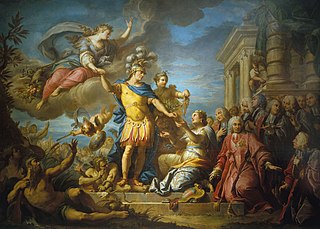 W
WThe 1748 Treaty of Aix-la-Chapelle, sometimes called the Treaty of Aachen, ended the War of the Austrian Succession, following a congress assembled on 24 April 1748 at the Free Imperial City of Aachen.
 W
WThe Treaty or Convention of Altranstädt was signed between Charles XII of Sweden and Joseph I, Holy Roman Emperor on 31 August 1707. It settled the rights of Protestants in Silesia.
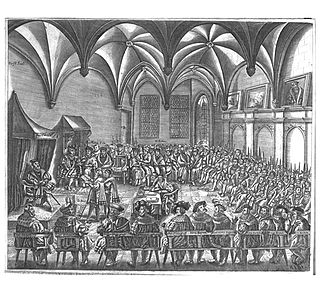 W
WThe Declaratio Ferdinandei was a clause in the Peace of Augsburg, signed in 1555 to end conflicts between Catholics and Protestants within the Holy Roman Empire. The Peace created the principle of Cuius regio, eius religio, which meant that the religion of the ruler decided the religion of the inhabitants. The Declaratio Ferdinandei exempted knights and some of the cities under the jurisdiction of an ecclesiastical prince if they had practiced Lutheranism for some time. The provision was not publicized as part of the treaty, and was kept secret for almost two decades.
 W
WThe Peace of Augsburg, also called the Augsburg Settlement, was a treaty between Charles V, Holy Roman Emperor, and the Schmalkaldic League, signed in September 1555 at the imperial city of Augsburg. It officially ended the religious struggle between the two groups and made the legal division of Christianity permanent within the Holy Roman Empire, allowing rulers to choose either Lutheranism or Roman Catholicism as the official confession of their state. However, the Peace of Augsburg arrangement is also credited with ending much Christian unity around Europe. Calvinism was not allowed until the Peace of Westphalia.
 W
WThe reservatum ecclesiasticum was a provision of the Peace of Augsburg of 1555. It exempted ecclesiastical lands from the principle of cuius regio, eius religio, which the Peace established for all hereditary dynastic lands, such as those ruled by princes or dukes. Under this principle, the religion of the ruler would be the religion of the country and of its people, those being his possession by inheritance.
 W
WThe Treaty of Baden ended formal hostilities between Kingdom of France and the Holy Roman Empire, which had been at war since the start of the War of the Spanish Succession. The treaty was signed on 7 September 1714 in Baden, Switzerland, and complemented the Treaties of Utrecht and Rastatt.
 W
WThe Treaty of Basel of 22 September 1499 was an armistice following the Battle of Dornach, concluding the Swabian War, fought between the Swabian League and the Old Swiss Confederacy.
 W
WOn 7 November 921, the Treaty of Bonn, the text of which calls itself a "pact of friendship" (amicitia), was signed between Charles III of France and Henry I of Germany in a minimalist ceremony aboard a ship in the middle of the Rhine not far from Bonn. The use of the river, which was the border between their two kingdoms, as a neutral territory had extensive Carolingian precedents and was also used in classical antiquity and in contemporary Anglo-Saxon England.
 W
WThe Treaty of Canterbury was a diplomatic agreement concluded between Sigismund, Holy Roman Emperor, and King Henry V of England on 15 August 1416. The treaty resulted in a defensive and offensive alliance against France.
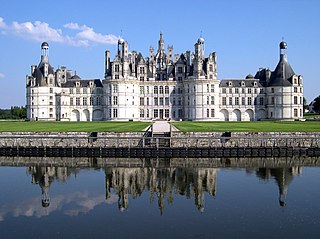 W
WThe Treaty of Chambord was an agreement signed on 15 January 1552 at the Château de Chambord between the Catholic King Henry II of France and three Protestant princes of the Holy Roman Empire led by Elector Maurice of Saxony. Based on the terms of the treaty, Maurice ceded the vicariate over the Three Bishoprics of Toul, Verdun, and Metz to France. In return, he was promised military and economic aid from Henry II in order to fight against the forces of Emperor Charles V of Habsburg.
 W
WThe Peace of Constance was a privilege granted by Frederick I, Holy Roman Emperor, and his son and co-ruler, Henry VI, King of the Romans, to the members of the Lombard League to end the state of rebellion (war) that been ongoing since 1167. It was a permanent peace that superseded the six-year truce imposed by the Treaty of Venice.
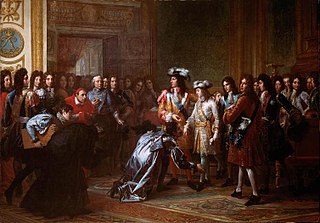 W
WThe Treaty of Den Haag (1701) or Treaty of The Hague (1701) was signed on 7 September 1701 between Great Britain, the Holy Roman Emperor Leopold I, and the United Provinces. It reconstituted the 1689 anti-French Grand Alliance in response to the issues that resulted in the War of the Spanish Succession.
 W
WThe First Congress of Vienna was held in 1515, attended by the Holy Roman Emperor, Maximilian I, and the Jagiellonian brothers, Vladislaus II, King of Hungary and King of Bohemia, and Sigismund I, King of Poland and Grand Duke of Lithuania. Previously, Vladislaus and Maximilian had agreed on a Habsburg-Jagiellon mutual-succession treaty in 1506. It became a turning point in the history of central Europe. After the death of Vladislaus, and later his son and heir, the childless King Louis II at the Battle of Mohács against the Ottomans in 1526, the Habsburg-Jagellion mutual succession treaty ultimately increased the power of the Habsburgs and diminished that of the Jagiellonians.
 W
WThe first League of Armed Neutrality was an alliance of European naval powers between 1780 and 1783 which was intended to protect neutral shipping against the Royal Navy's wartime policy of unlimited search of neutral shipping for French contraband. British naval commanders followed their instructions with care, ordered away boarding parties and made seizures with impunity. Four fifths of ships sailing, according to one estimate, made port in safety, but it was the loss of the other fifth that rankled. By September 1778, at least 59 ships were taken prize-8 Danish, 16 Swedish and 35 Dutch, not mentioning others from Prussia. Protests were enormous by every side involved.
 W
WThe Capitulation of Franzburg was a treaty providing for the capitulation of the Duchy of Pomerania to the forces of the Holy Roman Empire during the Thirty Years' War. It was signed on 10 November (O.S.) or 20 November (N.S.) 1627 by Bogislaw XIV, Duke of Pomerania and Hans Georg von Arnim, commander in chief of an occupation force belonging to the army of Ferdinand II, Holy Roman Emperor, led by Albrecht von Wallenstein. While the terms of the capitulation were unfavourable for the Duchy of Pomerania already, occupation became even more burdensome when the occupation force did not adhere to the restrictions outlined in Franzburg. Stralsund resisted with Danish, Swedish and Scottish support, another Danish intervention failed. Imperial occupation lasted until Swedish forces invaded in 1630, and subsequently cleared all of the Duchy of Pomerania of imperial forces until 1631.
 W
WThe Georgenberg Pact was a treaty signed between Duke Leopold V of Austria and Duke Ottokar IV of Styria on 17 August 1186 at Enns Castle on the Georgenberg mountain.
 W
WThe Treaty of Gerstungen was concluded on 2 February 1074 in Gerstungen Castle on the River Werra in what is now Germany. It required King Henry IV to restore Duke Otto of Northeim to the Duchy of Bavaria. In 1073 the latter had successfully headed the rebellion of the Saxons. King Henry had to escape from the siege of the Harzburg castle and, under the requirements of the treaty, to accede to the slighting of his castles in the Harz mountains, including for example, the Sachsenburg at Bad Sachsa and only built in 1070.
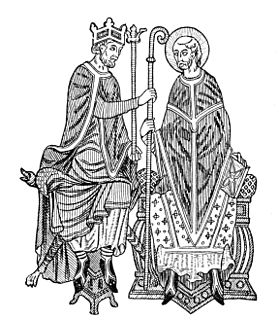 W
WThe Investiture Controversy, also called Investiture Contest, was a conflict between church and state in medieval Europe over the ability to choose and install bishops (investiture) and abbots of monasteries and the pope himself. A series of popes in the 11th and 12th centuries undercut the power of the Holy Roman Emperor and other European monarchies, and the controversy led to nearly 50 years of civil war in Germany.
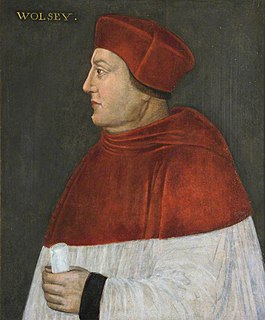 W
WThe Treaty of London in 1518 was a non-aggression pact between the major European nations. The signatories were Burgundy, France, England, the Holy Roman Empire, the Netherlands, the Papal States and Spain, all of whom agreed not to attack one another and to come to the aid of any that were under attack.
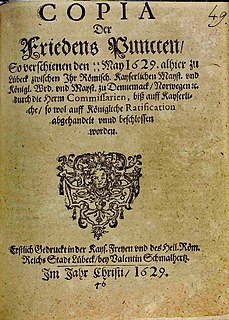 W
WTreaty or Peace of Lübeck ended the Danish intervention in the Thirty Years' War. It was signed in Lübeck on 22 May 1629 by Albrecht von Wallenstein and Christian IV of Denmark, and on 7 June by Ferdinand II, Holy Roman Emperor. The Catholic League was formally included as a party. It restored to Denmark-Norway its pre-war territory at the cost of final disengagement from imperial affairs.
 W
WThe Treaty of Lunéville was signed in the Treaty House of Lunéville on 9 February 1801. The signatory parties were the French Republic and Holy Roman Emperor Francis II. The latter was negotiating both on his own behalf as ruler of the hereditary domains of the Habsburg Monarchy and on behalf of other rulers who controlled territories in the Holy Roman Empire. The signatories were Joseph Bonaparte and Count Ludwig von Cobenzl, the Austrian foreign minister.
 W
WThe Treaty of Madrid was a peace treaty between the Republic of Venice and the Habsburg Monarchy, ending the Uskok War. Its indirect consequence was the elimination of Uskok piracy in the Adriatic Sea.
 W
WThe Treaty of Mersen or Meerssen, concluded on 8 August 870, was a treaty of partition of the realm of Lothair II, known as Lotharingia, by his uncles Louis the German of East Francia and Charles the Bald of West Francia, the two surviving sons of Emperor Louis I the Pious. The treaty followed an earlier treaty of Prüm which had split Middle Francia between Lothair I's sons after his death in 855.
 W
WThe Treaty of Neuberg, concluded between the Austrian duke Albert III and his brother Leopold III on 25 September 1379, determined the division of the Habsburg hereditary lands into an Albertinian and Leopoldian line.
 W
WThe Treaties of Peace of Nijmegen were a series of treaties signed in the Dutch city of Nijmegen between August 1678 and October 1679. The treaties ended various interconnected wars among France, the Dutch Republic, Spain, Brandenburg, Sweden, Denmark, the Prince-Bishopric of Münster, and the Holy Roman Empire. The most significant of the treaties was the first, which established peace between France and the Dutch Republic and placed the northern border of France very near its modern position.
 W
WThe Treaty or Peace of Oliva of 23 April (OS)/3 May (NS) 1660 was one of the peace treaties ending the Second Northern War (1655-1660). The Treaty of Oliva, and the Treaty of Copenhagen in the same year, and the Treaty of Cardis in the following year, marked the high point of the Swedish Empire.
 W
WThe Peace Treaty of Wiener Neustadt was a treaty between the Kingdom of Hungary and the Holy Roman Empire. It was preceded by the Truce of Radkersburg and followed by the Peace of Pressburg. It deals with succession issues and ascertains the territory mortgages in Moson, Sopron and Vas counties.
 W
WThe Peace of Prague, Pražský mír (Czech), Prager Frieden (German), signed on 30 May 1635, ended Saxony's participation in the Thirty Years War. The terms would later form the basis of the 1648 Peace of Westphalia.
 W
WThe fourth Peace of Pressburg was signed in Pressburg on 27 December 1805 between French Emperor Napoleon Bonaparte and Holy Roman Emperor Francis II, as a consequence of the French victories over the Austrians at Ulm and Austerlitz. A truce was agreed on 4 December, and negotiations for the treaty began. The treaty was signed in Pressburg, Hungary, by Johann I Josef, Prince of Liechtenstein, and the Hungarian Count Ignác Gyulay for the Austrian Empire and Charles Maurice de Talleyrand for France.
 W
WThe Peace of Ryswick, or Rijswijk, was a series of treaties signed in the Dutch city of Rijswijk between 20 September and 30 October 1697. They ended the 1688 to 1697 Nine Years' War between France, and the Grand Alliance, which included England, Spain, Emperor Leopold, and the Dutch Republic.
 W
WThe Treaty of Senlis concerning the Burgundian succession was signed at Senlis, Oise in May 1493 between Maximilian I of Habsburg and King Charles VIII of France.
 W
WThe Treaty of Szatmár was a peace treaty concluded at Szatmár on 29 April 1711 between the House of Habsburg emperor Charles VI, the Hungarian estates and the Kuruc rebels. It formally ended Rákóczi's War of Independence, which had endured since 1703.
 W
WThe Protestant Union, also known as the Evangelical Union, Union of Auhausen, German Union or the Protestant Action Party, was a coalition of Protestant German states. It was formed on May 14, 1608 by Frederick IV, Elector Palatine in order to defend the rights, land and safety of each member. It included both Calvinist and Lutheran states, and dissolved in 1621.
 W
WThe Treaty or Peace of Venice, 1177, was a peace treaty between the papacy and its allies, the north Italian city-states of the Lombard League, and Frederick I, Holy Roman Emperor. The Norman Kingdom of Sicily also took part in negotiations and the treaty thereby determined the political course of all Italy for the next several years.
 W
WThe 1731 Treaty of Vienna was signed on 16 March 1731 between Great Britain and Emperor Charles VI on behalf of the Habsburg Monarchy, with the Dutch Republic included as a party.
 W
WThe Peace of Westphalia is the collective name for two peace treaties signed in October 1648 in the Westphalian cities of Osnabrück and Münster. They ended the Thirty Years' War and brought peace to the Holy Roman Empire, closing a calamitous period of European history that killed approximately eight million people.